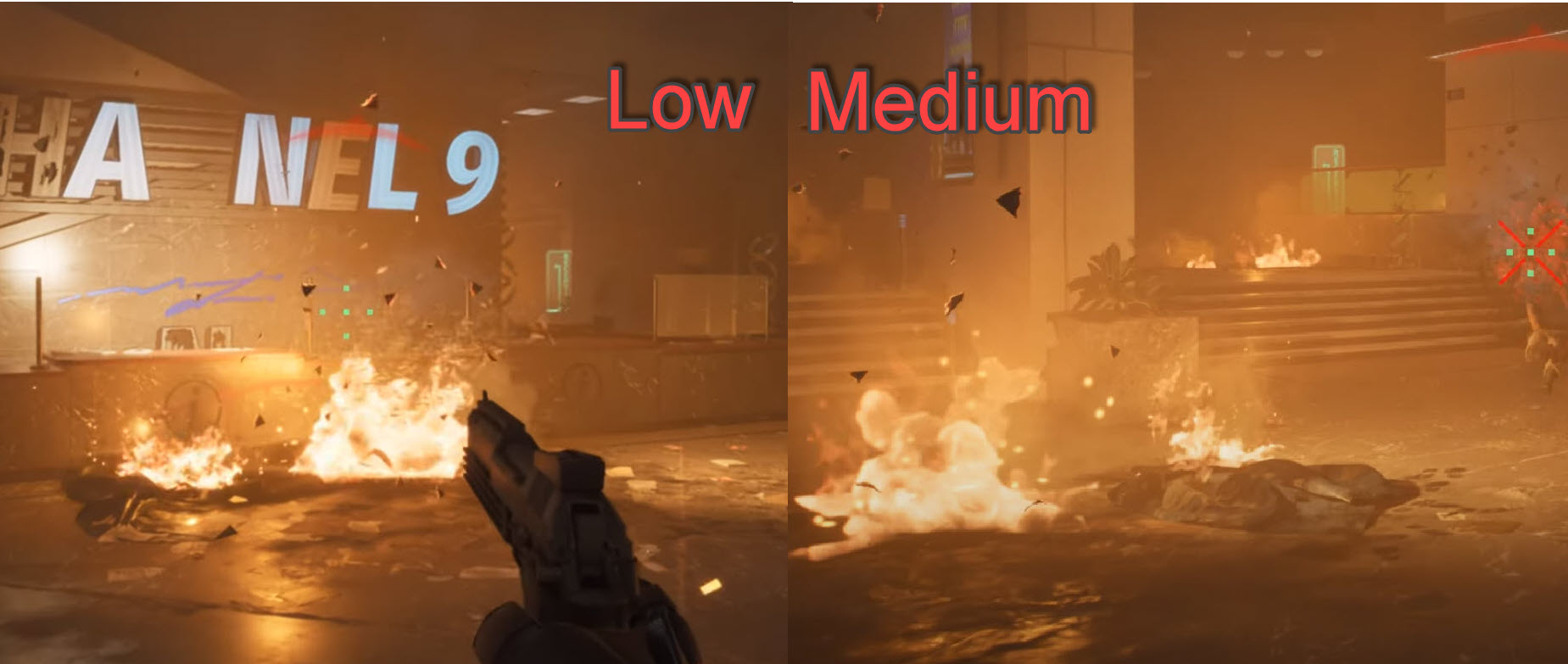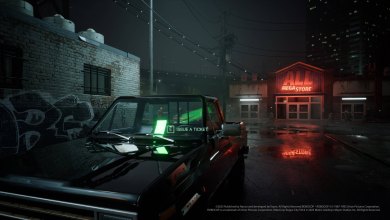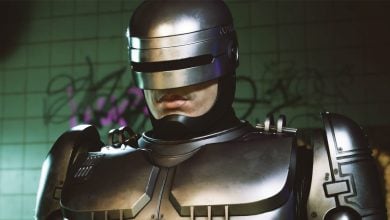RoboCop: Rogue City just got released, and I, for one, can’t put it down. The gunplay, the nostalgia, and the cheesy lines from the movies are all here, and I love it. But, even though the game is decently optimized, I still had to dig around to get the most out of my system. So, if you have been looking for the Best RoboCop: Rogue City Settings, I got you. After all, the only thing better than nostalgia is nostalgia in 60 FPS.
I’ve benchmarked RoboCop Rogue City on a PC with the following specs:
- OS: Windows 11 Pro 23H2
- System: Lenovo Legion 7i Laptop
- CPU: Intel i7-11800H
- GPU: NVIDIA RTX 3070 8GB
- RAM: 32GB DDR4
- Storage: Samsung 1TB SSD Gen 4
You’ll at least need an Intel i7-4790 or a Ryzen 5 2600 CPU, Intel Arc A380 or an NVIDIA GTX 1650 or an AMD Radeon RX 480 GPU and 16 GB RAM to run RoboCop Rogue City.
I found the following Robocop Rouge City settings to be the most taxing:
- View Distance
- Post Processing
- Shadows: LowTextures
- Effects
RoboCop is surprisingly well-optimized for a game with such visual fidelity. The game ran extremely well on my testing PC, right until it crashed unexpectedly. Even though RoboCop Rogue City nails the performance part, it lacks tremendously in stability as I’ve experienced a few fatal errors and multiple crashes while testing.
Best Display Settings For Rogue City
The game provides many ways to tweak the performance, I generally play around with the display settings more to get a good middle ground. Here’s a quick rundown of the display settings I am using for the Rogue City.
Overview Of The Display Settings
| Graphics Autodetect | Detect |
| Gamma Correction | Gamma |
| Field of View | 80 |
| VSync | Off |
| Window Mode | Full Screen |
| Resolution | Native or 1080p |
| Upscaling | AMD FSR 2.2 |
| Resolution Scale | 90 |
| NVIDIA DLSS Super Resolution | DLAA |
| NVIDIA Sharpness | 0 |
| NVIDIA Frame Generation | Off |
| AMD FSR 2.2 | Balanced |
Now, for a quick explanation of why these options enabled me to get the most performance out of the game.

Gamma Correction: Gamma
Gamma Correction essentially makes the darker parts of the game a bit more recognizable. As the game mostly takes place during nighttime, I prefer to leave this one on as it doesn’t impact the performance too much.
Field of View: 80
Field of View determines how much of the game world you can see at a time. I chose to leave this at the default 80 value. So I could experience the game as intended. But you can play around with it if you would like.
VSync: Off
I prefer VSync to be off in most games because I feel the extra frames to be worth it. However, if you start getting screen tearing, I would advise you to turn it back On. In a game like RoboCop: Rogue City, the VSync setting won’t make much of a difference.
Window Mode: Full Screen
Using Full Screen is almost always the best option for any game. This is because it grants the game a higher priority in your Operating System, which in turn reduces input latency and improves the overall performance.
Resolution: Native or 1080p
The improved clarity from using your native resolution in a game is, for me, a worthwhile performance hit. However, if your system does struggle to play the game, 1080p is a sweet spot to land upon.
Upscaling: AMD FSR 2.2
Upscaling essentially boosts frames and enhances the image quality by temporal upscaling. It provides massive performance gains at minimal quality loss. While DLSS would be my first choice, it isn’t supported by non-NVIDIA GPUs. So, my advice is to use FSR only if DLSS is not available for you.
NVIDIA DLSS Super Resolution: DLAA
If your GPU does support DLSS and you picked that as your upscaling option, DLAA offers a decent middle-ground between quality and performance. It does cost a few more frames than native DLSS, but the quality gains were worth it, in my experience.
Sharpness: 0
Again, you will have this option available if you have DLSS turned on. For me, the game looks pretty unnatural with any amount of sharpness, so I prefer to leave it at 0.
AMD FSR 2.2: Balanced
This option matters the most if you have FSR enabled. I found the Balanced option to be a great spot between performance and visuals. It provides a decent performance gain while not sacrificing the quality too much.
Best Graphics Settings For Rogue City
The place where you get the most amount of tweaking done is the graphics settings. And while the menu isn’t as detailed as I would like it to be, we can still squeeze out a decent amount of performance.
Best Graphics Settings Summarized:
| Graphics | Custom |
| View Distance | Near |
| Post Processing | Low |
| Shadows | Low |
| Textures | Low/Medium |
| Effects | Low/Medium |
| Chromatic Aberration | On |
| Motion Blur | Off |
| Frame Rate | Unlimited |
I tested out several different settings, and these worked best for me. Read below to understand why and if you should try to play around with any of the settings.

View Distance: Near

View Distance determines how much of the game world is loaded around you. So, you can understand this as how far you can see in a single direction. As the game is filled with indoor areas, I have set this to “Near”. This resulted in a decent performance gain for me, while the game looked practically the same in most places.
My Thoughts: The textures of trash on the road are much more prominent in the medium settings than low. Also, check out the details in the tree on the back that’s much more detailed in far settings compared to near.
Post Processing: Low
Post Processing applies filters on top of your generated frames for visual aesthetics. I found “Low” to be a great spot to be on, as Medium and High tanked my GPU a lot.
Shadows: Low

For Shadows, I found “Low” to be the best for performance. Any higher, and I was hit with a significant performance hit. Another reason was that Low didn’t look as bad compared to Medium, which had a higher performance cost.
My Analysis: The shadows on the low look much flatter compared to the ones in the medium preset. However, this isn’t a major change worth a 5-7% performance deduction.
Textures: Low/Medium
Textures are a setting that depends entirely upon the amount of VRAM you have. If you have a decent amount, “Medium” is a great spot. Otherwise, Low is where you want to be at. So, my advice would be to check both options and see what suits your GPU better.
Effects: Low/Medium

As you can see in the image above, there isn’t much noticeable difference between low and medium settings in normal gameplay.
Much like Shadows, Effects also hit your performance quite a bit. To get the most performance, I had to go with “Low” on this one. But, if you have the spare resources, Medium is where you want to be for the visuals.
Chromatic Aberration: On
I found Chromatic Aberration to have little to no effect on the performance. So, I just left it turned “On” to give the game a bit cinematic feel.
Motion Blur: Off
Motion Blur is the first setting that I turn off for any game that’s even slightly fast-paced. While it does look okay, the performance cost and the wobble are just not worth it. You should turn it off, especially if you suffer from Motion Sickness.
Final Thoughts
By following my shared settings, I am pretty hopeful you will be able to get the best possible performance for your system. However, seeing the 1% lows, I have noticed that the game runs quite well, even on older hardware.
As far as the technical issues are concerned, I’ve seen several reports of crashing in the Steam community. However, the developers took notice of the issue and released an update to address the crashes in the game.
Greetings everyone,
We've just pushed a new patch, fixing crashes and other issues.All platforms:
▪️ Fixed 22 crashes
▪️ Minor environmental fixes
▪️ Localization updatesPC only:
▪️ You can now choose the reflection method between Lumen and Screen Space Reflection.
▪️…— RoboCop: Rogue City – OUT NOW (@RoboCopRC) November 27, 2023
But if you’re still facing crashes, I’d recommend jumping to our RoboCop Rogue City crash fix guide right after this one.
My advice would be to play around with some of the settings I have mentioned to get the most out of your experience.
Lastly, if you can use a little more performance, give the following guides a read:
Next: RoboCop Rogue City Review
Thanks! Do share your feedback with us. ⚡
How can we make this post better? Your help would be appreciated. ✍
This brings back memories. Playing RoboCop would have been fun if it wasn\'t for the issues



